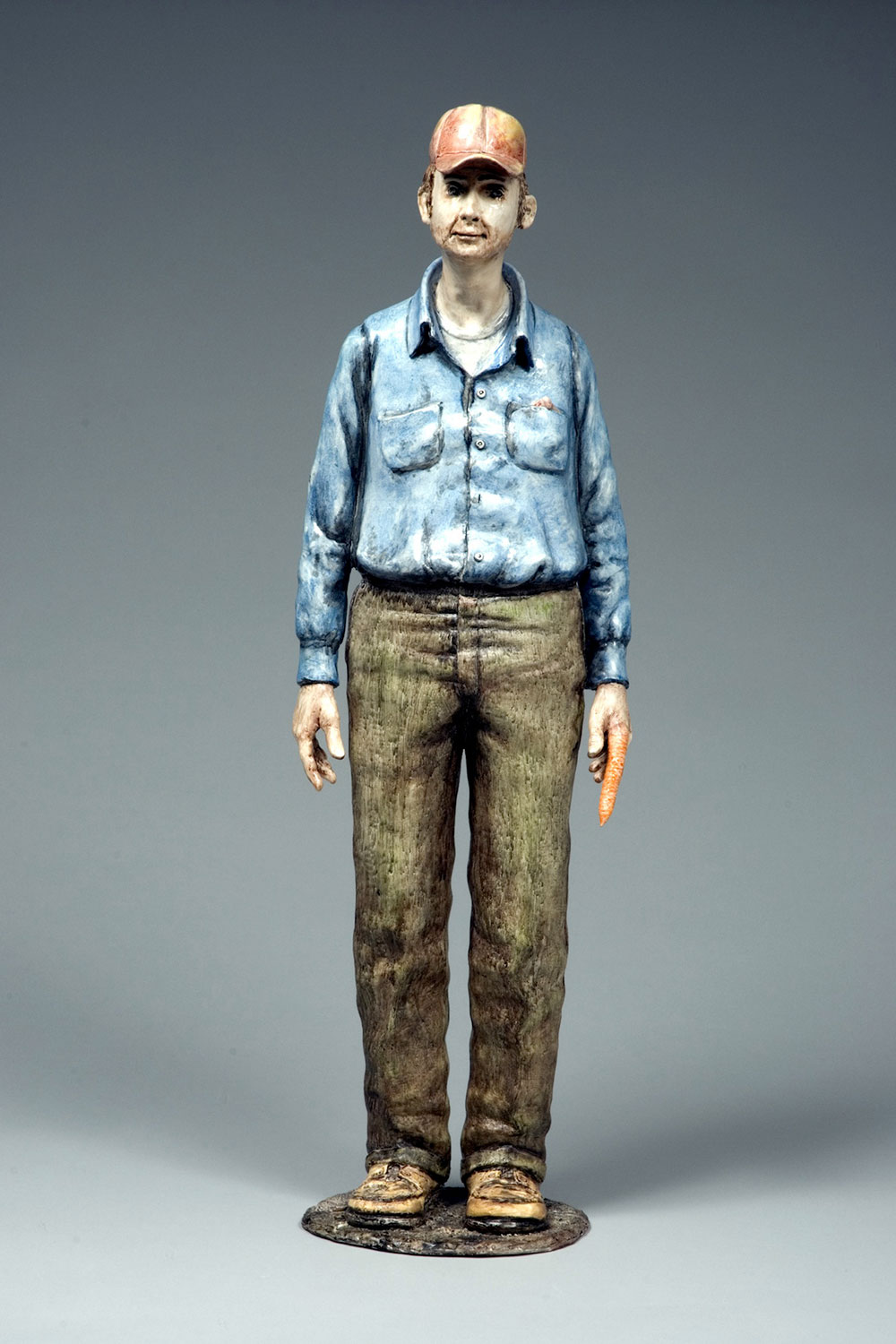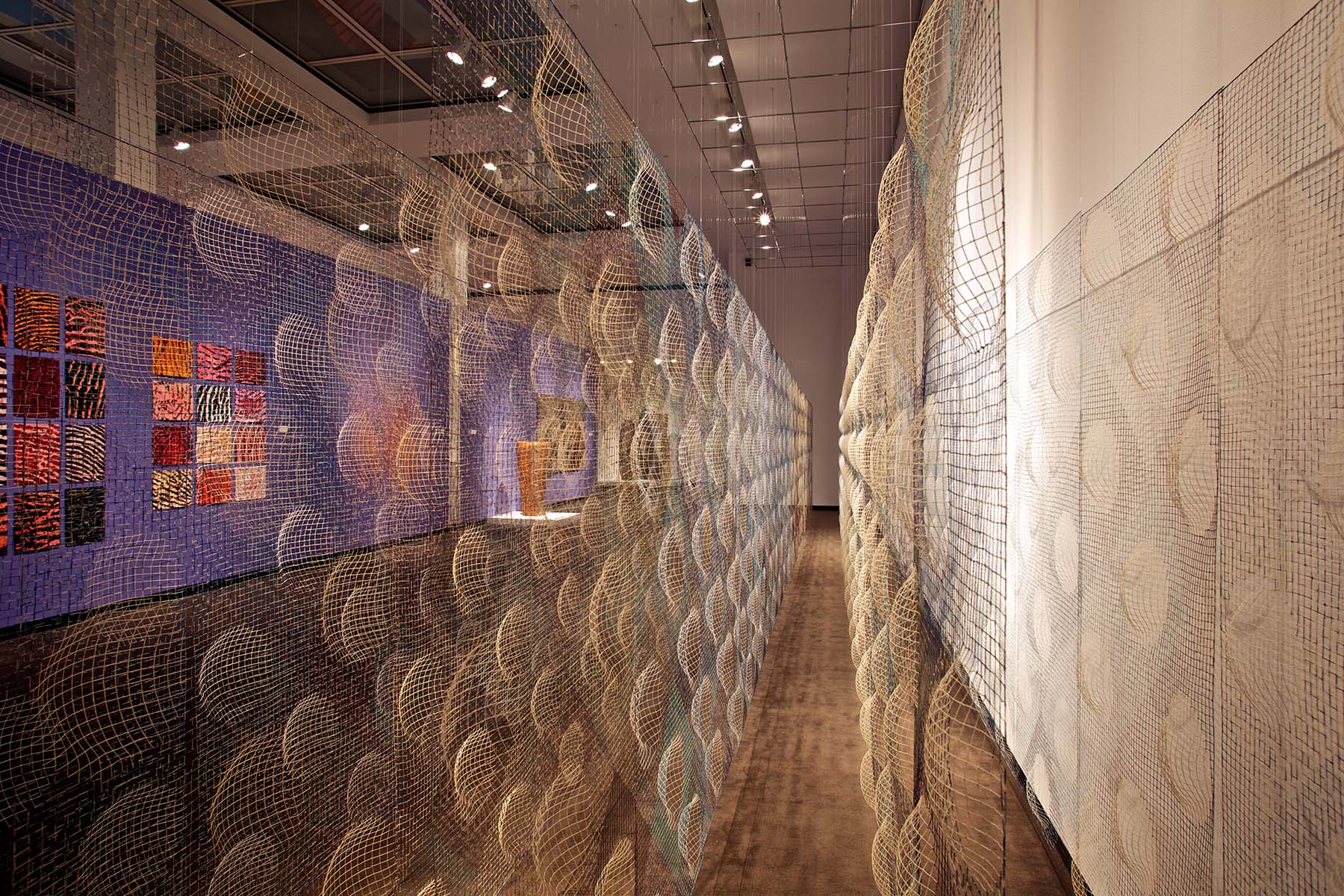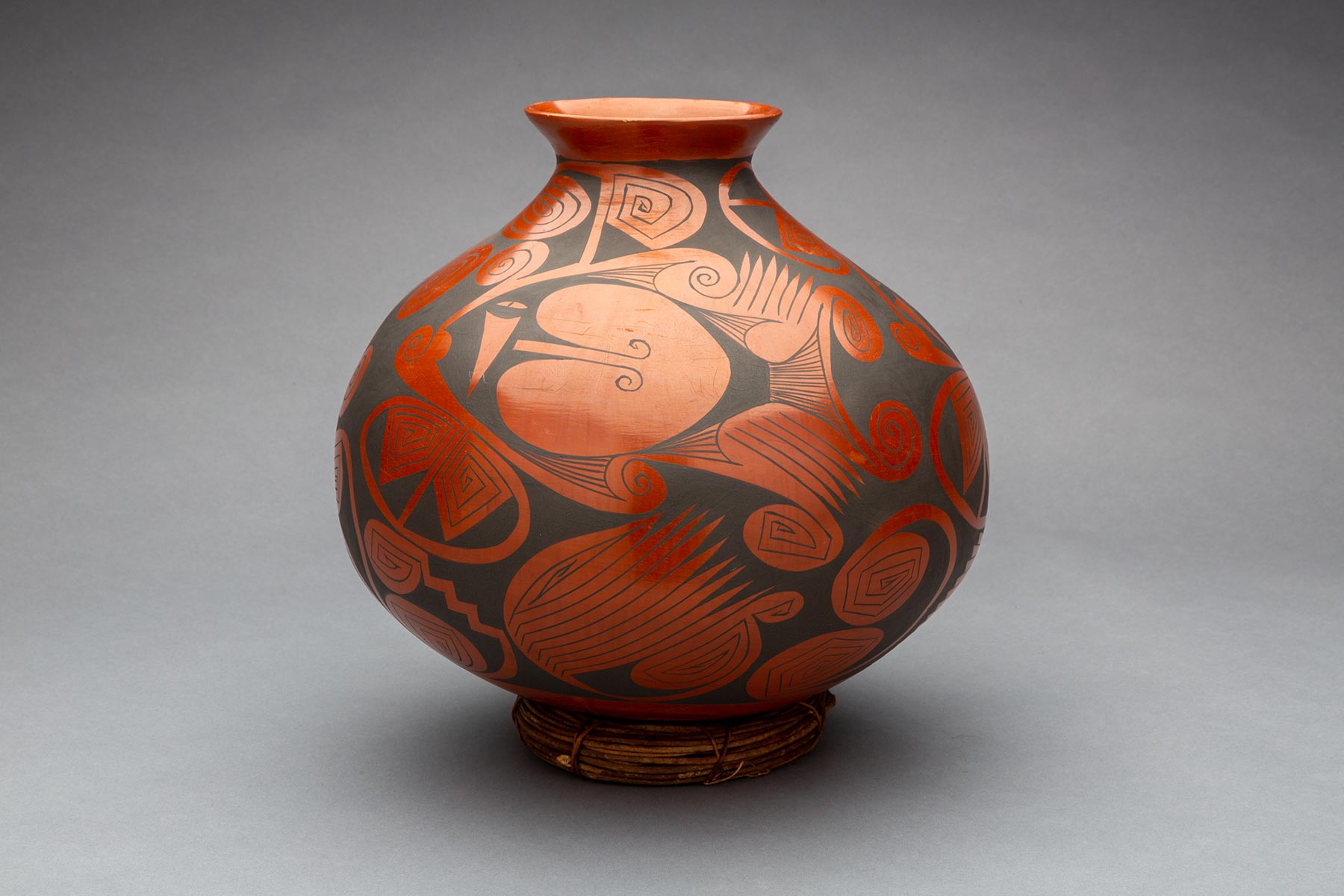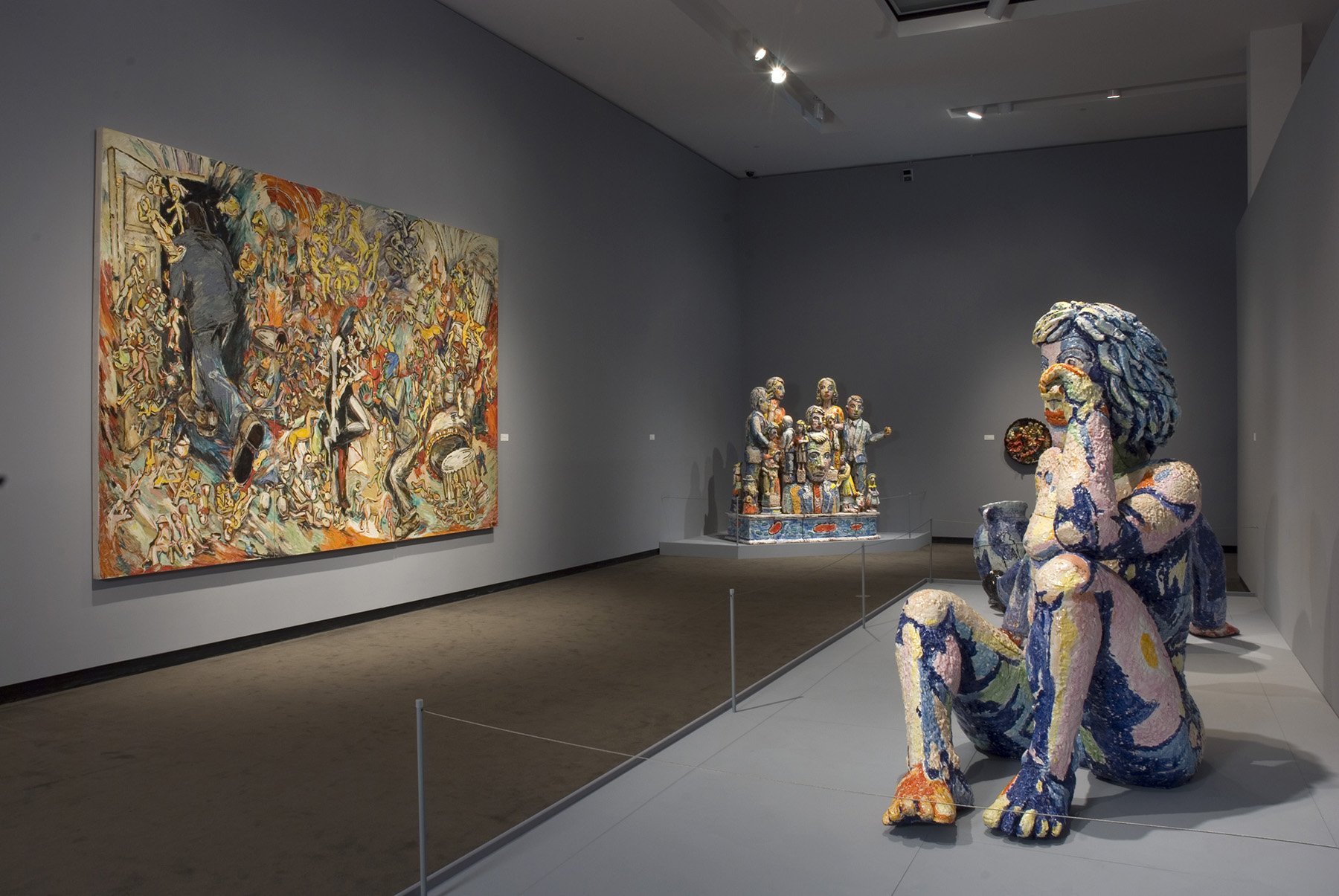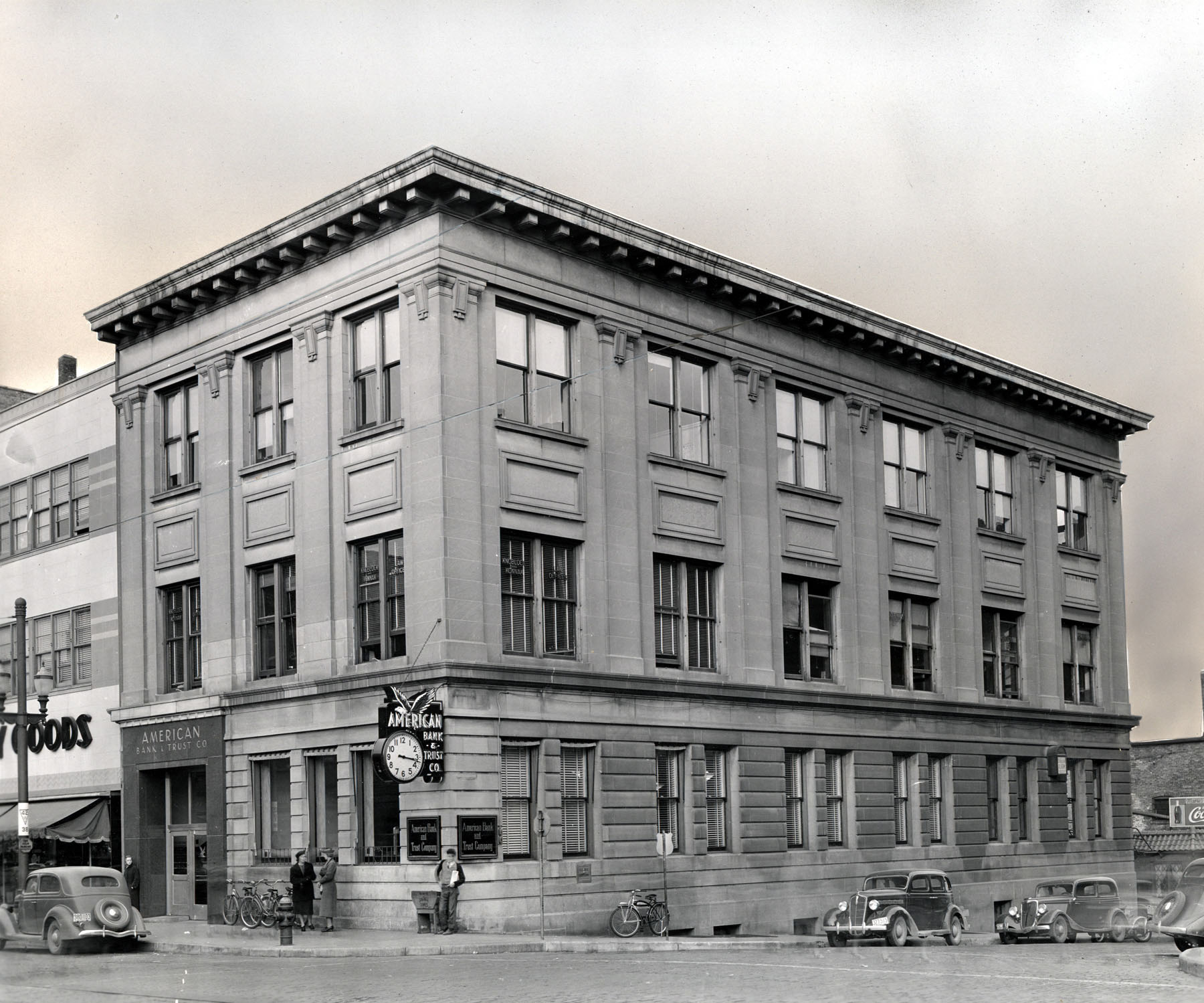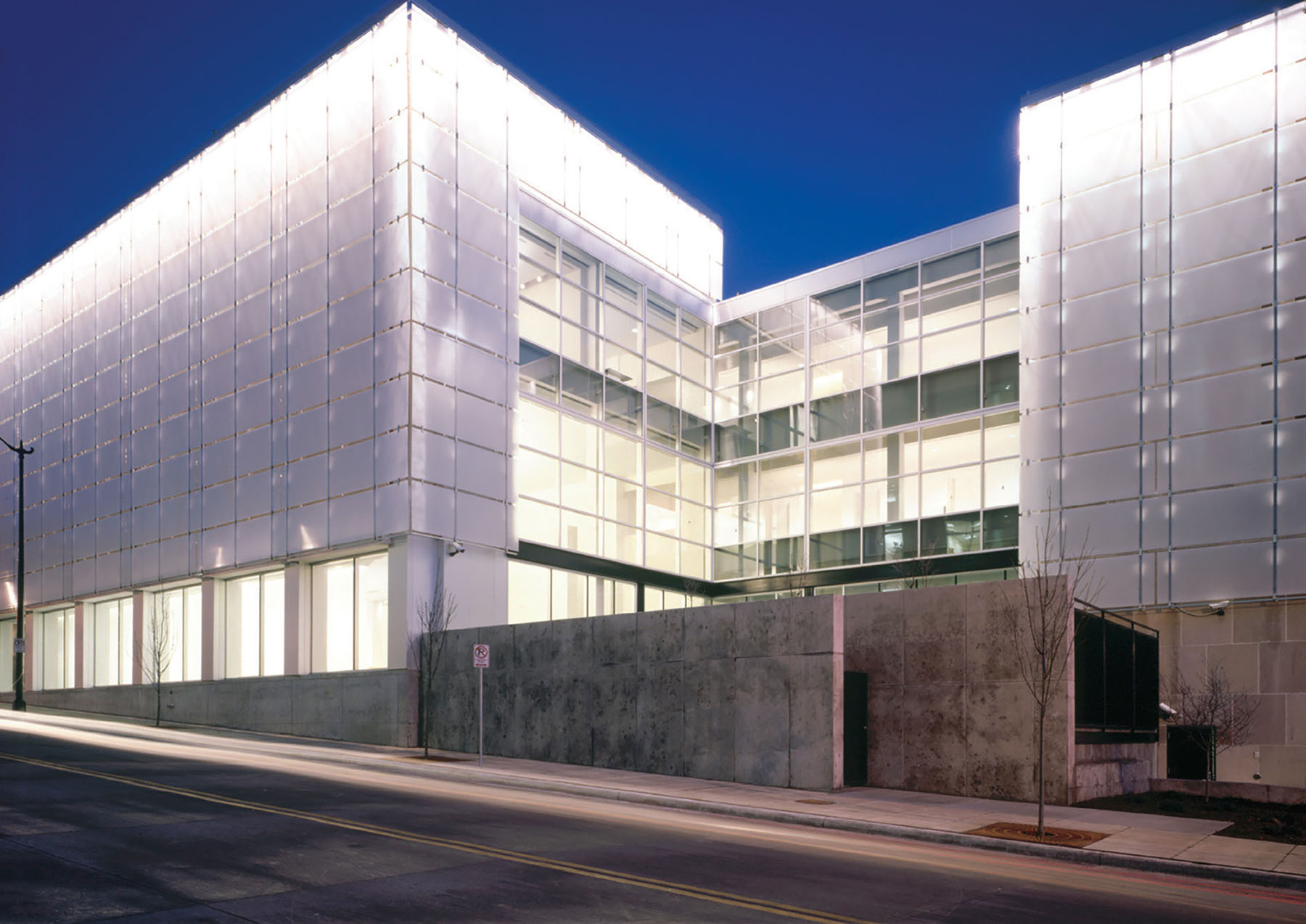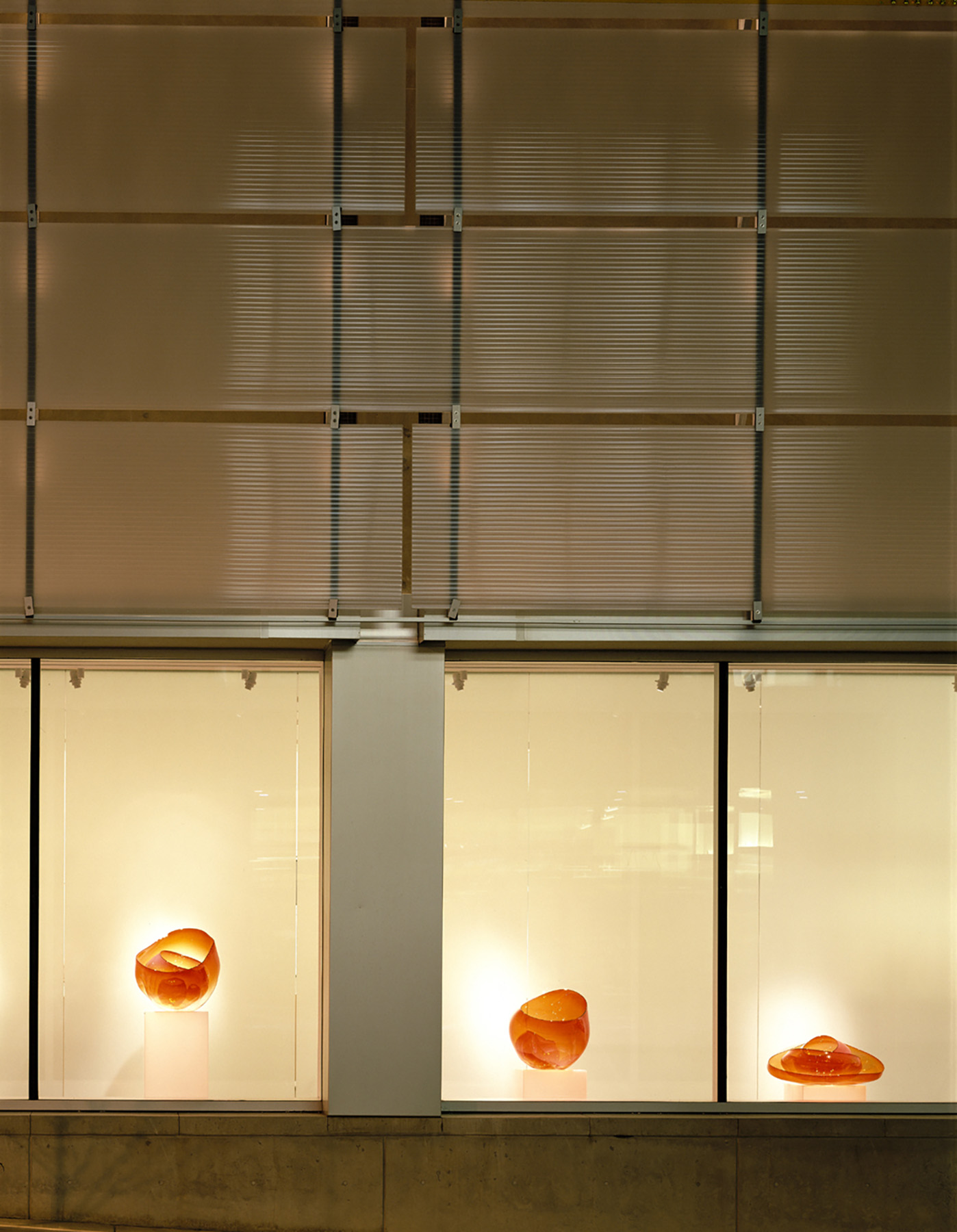
Installation view from the exhibition Dale Chihuly Glass Baskets
May 11, 2003 – June 11, 2004
RAM’s First 20 Years: A Visual History of the Art and Architecture
June 17, 2023 – July 20, 2024
Windows on Fifth Gallery at Racine Art Museum
RAM’s First 20 Years is a visual summary of the art and architecture that helped shape the early chapters of Racine Art Museum, home of North America’s largest contemporary craft collection. The exhibition blends objects from RAM’s holdings with photographs of both the building designed by Brininstool + Lynch and the galleries filled with art.
Celebrating an anniversary often involves an assessment of where things are and where they could be relative to where they were. RAM is an institution focused on creativity and vision and the building reflects that. Looking back at what motivated design plans and architectural concepts provides background for considering future objectives.
Not only do the images and objects featured in this exhibition establish a framework for understanding a formative time for this dynamic institution, but they also recognize the symbiotic relationship between the architectural space and the art that inhabits it. Because Brininstool + Lynch—an award-winning architectural firm based in Chicago—designed RAM with the permanent collection in mind, the interior is meant to showcase the artwork. The theories behind the design strategy reinforce the connection:
“Using a structural economy, the design of the RAM project provides the best possible viewing conditions for RAM’s collection. The existing building, a composite of different structural systems from prior renovations, has been completely reconfigured. Its interior uses transparency, translucency, opacity, and light to establish a continuing sense of anticipation as a visitor moves through the space. The museum is designed to allow access to an abundance of natural light and views of Lake Michigan while controlling light in critical areas to protect the art from damage and provide optimal viewing. To signal the interior’s transformation, a system of translucent panels held away from the building surface covers much of the exterior. Natural light causes the panels to be iridescent during the day while lighting illuminates them in the evenings so that the exterior glows.”
While RAM’s collection has grown exponentially since the museum was first built, it is still rooted in the kind of work that encouraged the overall design. In addition, certain facets have been expanded such as the rotating exhibition series that occurs in the Windows on Fifth gallery on the south side of the museum’s ground floor. While it was originally intended to focus on artists working with clay, metal, and glass, various exhibitions have included found objects, fibers, and natural materials.
RAM’s First 20 Years is also an homage to Brad Lynch, a partner at Brininstool + Lynch and Racine native. Lynch, who passed away in 2022, took his first art classes at RAM’s Wustum Museum and incorporated his own experiences being raised in this community into his work on RAM. His desire to establish a space that would draw people inside led to distinctive building features such as the acrylic panels on the exterior and a ground floor with storefront-like windows that make the interior contents visible from the street.
The exhibition is designed to expand over time to include an archive focused on RAM’s design and construction, with a special emphasis on Brad Lynch’s involvement.
RAM’s First 20 Years: A Visual History of the Art and Architecture
June 17, 2023 – July 20, 2024
Windows on Fifth Gallery at Racine Art Museum

Installation view from the exhibition Dale Chihuly Glass Baskets
May 11, 2003 – June 11, 2004
RAM’s First 20 Years is a visual summary of the art and architecture that helped shape the early chapters of Racine Art Museum, home of North America’s largest contemporary craft collection. The exhibition blends objects from RAM’s holdings with photographs of both the building designed by Brininstool + Lynch and the galleries filled with art.
Celebrating an anniversary often involves an assessment of where things are and where they could be relative to where they were. RAM is an institution focused on creativity and vision and the building reflects that. Looking back at what motivated design plans and architectural concepts provides background for considering future objectives.
Not only do the images and objects featured in this exhibition establish a framework for understanding a formative time for this dynamic institution, but they also recognize the symbiotic relationship between the architectural space and the art that inhabits it. Because Brininstool + Lynch—an award-winning architectural firm based in Chicago—designed RAM with the permanent collection in mind, the interior is meant to showcase the artwork. The theories behind the design strategy reinforce the connection:
“Using a structural economy, the design of the RAM project provides the best possible viewing conditions for RAM’s collection. The existing building, a composite of different structural systems from prior renovations, has been completely reconfigured. Its interior uses transparency, translucency, opacity, and light to establish a continuing sense of anticipation as a visitor moves through the space. The museum is designed to allow access to an abundance of natural light and views of Lake Michigan while controlling light in critical areas to protect the art from damage and provide optimal viewing. To signal the interior’s transformation, a system of translucent panels held away from the building surface covers much of the exterior. Natural light causes the panels to be iridescent during the day while lighting illuminates them in the evenings so that the exterior glows.”
While RAM’s collection has grown exponentially since the museum was first built, it is still rooted in the kind of work that encouraged the overall design. In addition, certain facets have been expanded such as the rotating exhibition series that occurs in the Windows on Fifth gallery on the south side of the museum’s ground floor. While it was originally intended to focus on artists working with clay, metal, and glass, various exhibitions have included found objects, fibers, and natural materials.
RAM’s First 20 Years is also an homage to Brad Lynch, a partner at Brininstool + Lynch and Racine native. Lynch, who passed away in 2022, took his first art classes at RAM’s Wustum Museum and incorporated his own experiences being raised in this community into his work on RAM. His desire to establish a space that would draw people inside led to distinctive building features such as the acrylic panels on the exterior and a ground floor with storefront-like windows that make the interior contents visible from the street.
The exhibition is designed to expand over time to include an archive focused on RAM’s design and construction, with a special emphasis on Brad Lynch’s involvement.
Sample of Work in the Exhibition
Click/tap an image for more information
Exhibitions at RAM are made possible by:
Platinum Partners
The Estate of Karen Johnson Boyd
David Charak
Judith and David Flegel Fund
Ron and Judith Isaacs


Windgate Foundation
Diamond Partners
Ruffo Family Foundation
Ruth Foundation for the Arts
Diane Zebell
Gold Partners
Anonymous
A.C. Buhler Family
Robert E. Kohler Jr. Fund
Osborne and Scekic Family Foundation
Reliance Controls
Trio Foundation of St. Louis
W.T. Walker Group, Inc.
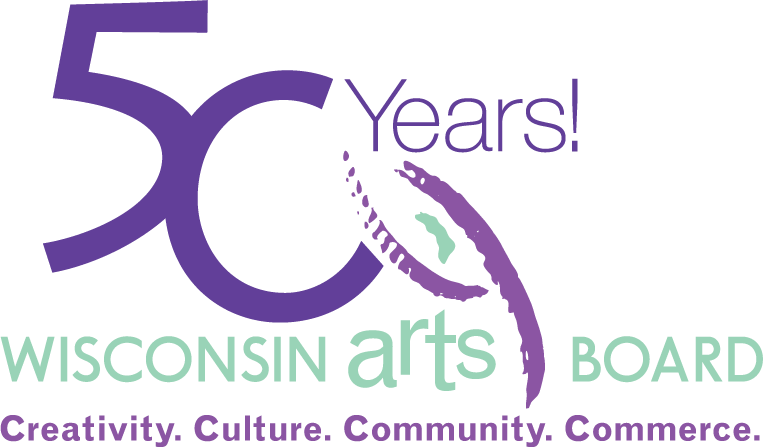
Silver Partners
Anonymous
Baird
Lucy G. Feller
Ben and Dawn Flegel
Sharon and Tom Harty
Dave and Judy Hecker
Paula Kalke
Horizon Retail Construction, Inc.
Johnson Financial Group
Lang Family Foundation
Dorothy MacVicar
Jan Serr & John Shannon
Sandra Shove
Willard and Mary Walker
Bronze Partners
Sandy and Gus Antonneau
Carol Baylon
Rose and Peter Christensen
Dave’s Wine Garage
Educators Credit Union
Patricia and Richard Ehlert
Express Employment Professionals
Deborah Ganaway
Carol Griseto
Hitter’s Baseball
Bill and Debbie Keland
Nancy and Nick Kurten
Susan Manalli
Norbell Foundation
JoAnna Poehlmann
Rasmussen Diamonds
SC Johnson
Harold and Lois Solberg
Kathy Stranghellini
Tito’s
Twin Disc
Janna Waldeck
Barbara Waldman
Marc J. Wollman
Stay in Touch
The Racine Art Museum and RAM’s Wustum Museum work together to serve as a community resource, with spaces for discovery, creation, and connection. Keep up to date on everything happening at both museum campuses—and beyond—by subscribing to our email newsletter:


